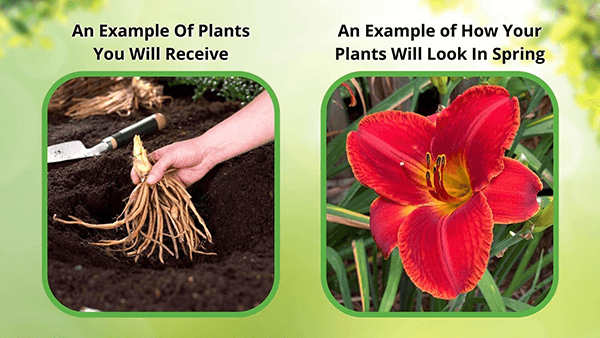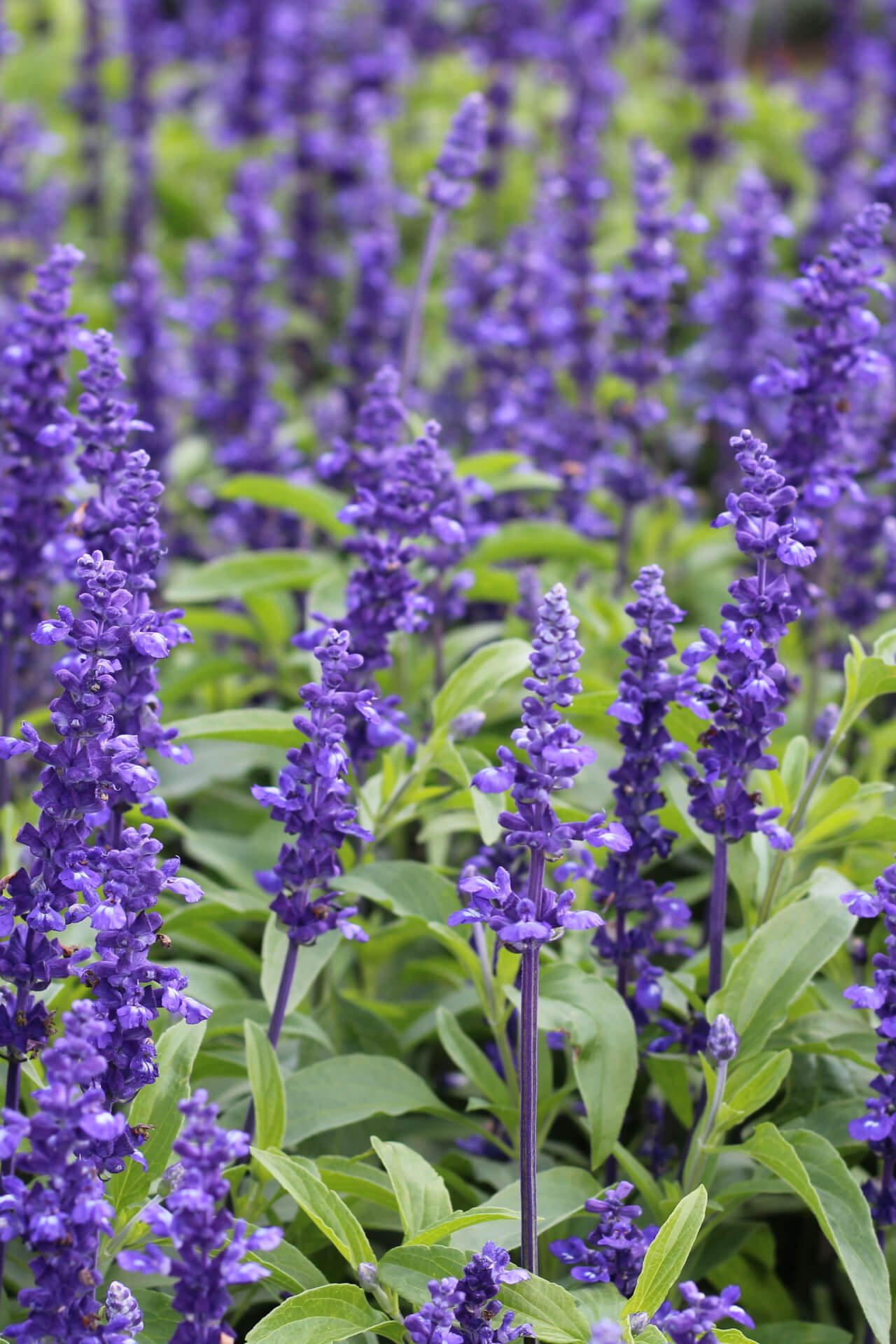



Bugleweed Plant
This plant ships:
NowWe sell bare root plants - click here to see what you'll receive
Bugleweed Plant: Ajuga
Bugleweed plant is a ground-covering perennial ground cover known for its low-growing, spreading nature and attractive foliage. It is often used in landscaping for its vibrant leaves and small spikes of blue, purple, or pink flowers. It will quickly fill empty spaces, making it an excellent choice for areas with poor soil or where other types struggle to thrive.
It is a versatile and attractive perennial with numerous landscaping benefits. Its unique characteristics and adaptability make it popular in various garden settings and design schemes.
Bugle, also called carpet bugle, ground pine, bugle, or ajuga, is a family of 60 related flowering perennials. The different species are found in the wild in Australia, Africa, Asia, and Europe. Because of their impressive attributes, they are also introduced into yards and gardens outside these areas. With a closer look at the many benefits of introducing bugle to your space, it is the perfect new addition to your landscaping.
Bugleweed Plant Is A Fast-Growing Ground Cover
This creeping type grows up to 20 inches tall, although some species are as short as two inches. It proliferates by shooting runners on top of the soil. These runners create a fascinating look, and they quickly sprout new stems. In the wild, it blankets meadows and other open spaces, so it is well-suited for putting in areas of your yard that need ground cover. Notably, the plant is often used to prevent soil loss from erosion because of its ability to spread rapidly across steep slopes.
Weeds are a nuisance that inevitably requires frequent attention. They can overtake your yard and leave it unkempt when not tended to regularly. As a fast-moving ground cover, bugles crowd out the weeds. As a result, their growth could be improved, and they will quickly become less of a nuisance in your space. You can start enjoying your yard more rather than worrying about keeping up with the weeds.
Has Stunning Blooms
The plant is a fascinating species with dark, shiny leaves that grow oppositely. During the flowering season, usually in the middle or end of the spring months, spikes shoot up that may be as tall as 10 inches above its base. These spikes produce purple, violet, or blue flowers. The flowers have long, flowing petals that some people describe as looking like a woman’s skirt.
Deer and Rabbit Resistant
Most rodents and mammals do not like the morsel of it and stay away from it. As a result, it is ideal for yards where deer and other animals forage and cause damage. At the same time, insects are attracted to its pollen. You may spot moths, butterflies, and bees on the blooms during the flowering season. As essential pollinators, these insects are crucial to maintaining a healthy ecosystem in your yard.
It is a low-growing, easy-to-grow evergreen perennial with lovely green leaves and dark purple to blue flowers. It is tolerant of many soil types and is usually cultivated in shade, which provides an overlying layer of leaves that keeps weeds at bay.
It is also one of the easiest plants to maintain because it will do almost anything. Once planted, it adapts to almost any soil and doesn't require much water.
Groundcover Benefits
It works very well as a ground cover because it forms a carpet and spreads quickly. It helps in the weeds as the plant has thick leaves throughout the season.
Does it Attract Pollinators
The purple or blue flower spikes are particularly interesting to bees and butterflies. It is an attractive addition to your garden and certainly beneficial if you want to encourage local wildlife.
Can it be Grown in Containers
Bugleweed can be easily propagated in containers, making it a good addition to a patio or balcony. The pots or containers should be well drained.
| Planting zone | [3, 4, 5, 6, 7, 8, 9] |
|---|---|
| Bloom season | Summer |
| Bloom color | Purple |
| Height At Maturity | Under 12" |






Bugleweed Plant
This plant ships:
Now| Planting zone | [3, 4, 5, 6, 7, 8, 9] |
|---|---|
| Bloom season | Summer |
| Bloom color | Purple |
| Height At Maturity | Under 12" |

